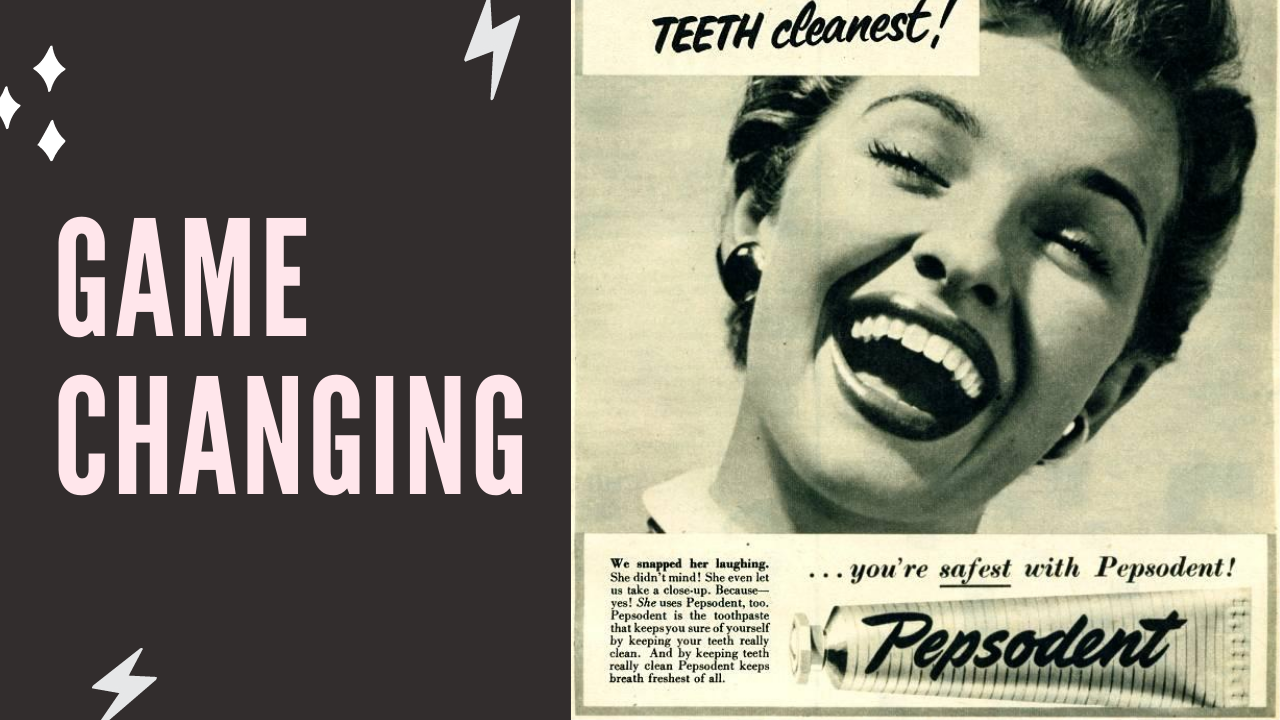
This is how Pepsodent changed its Global Brand Image and Dental Hygiene Forever
Brushing teeth is an incredibly important part of our daily routine. This is such an automatic process that we probably don’t even think about it. But this was not the case at the turn of the 20th century.
Why were people back then not using toothpaste?
The concept of brushing was not so common back in the late 1800s and early 1900s. You could not find toothpaste in your local stores, and only door-to-door salesmen were the ones that pushed sales. But, they didn’t do too well. For this reason, toothpaste was not a common item back then.
Despite the enormous amount of dental problems in America, a majority of the people couldn’t grasp the concept or see the benefit of using the product.
It’s not that no one was brushing their teeth, it just wasn’t the vast majority as it is today. But what if this product could be improved on and made people feel as if they need to have it? In the days of yore, toothpaste was unpleasant, chalky and felt like brushing your teeth with clay. This was about to change.
The gamechanger: Mr Claude C.Hopkins
Pepsodent had launched a new toothpaste which was more pleasurable to use. And the most important thing, it now had a minty flavour.
Even though the product was very impressive, the sales of this product were not good. This was the time when Pepsodent approached Claude C.Hopkins, a pioneer of advertising. Hopkins decided to market Pepsodent with a unique approach, a bit different from his past marketing strategies.
For his marketing approach, he drafted the campaign around these elements:
The cue(trigger), The routine, The reward.
The Game-changing Move
One of the things that Hopkins established with his marketing was using a “trigger”. But the question was, how can it be done with a person’s mouth?
His solution to this was something very simple and impactful.
He pointed out how dirty and grimy one’s teeth were. People were told to run their tongue across their teeth to feel the grime(plaque) that had built-up on their teeth. Hopkins explained grime on teeth to be a film which would lead to decay and gum problems. Grimy teeth were the trigger.
But, what was the solution?
The act of brushing teeth was the solution. Sounds good right? But there was still a hurdle: the minty flavour. No one had ever experienced the sensation of mint on their teeth like this before. How could Hopkins combat the resistance to the minty flavour? The way he promoted the minty flavour was the fact that the mint flavour was a sign that the toothpaste was working and getting rid of the plague. Another part of this was the frothing that happens when brushing your teeth. The frothing agents didn’t provide any specific benefits, but it was another indicator that the toothpaste was working.
Like the mint, the frothing was another “reward”.
To sum up the above execution:
- The cue: the feeling of grime and film on the teeth
- The routine: the brushing of the teeth to deal with the grime
- The reward: the frothing, minty sensation that leaves your mouth fresh and sparkling clean
The success of the campaign:
People now had a cue to take action and brush. The film on teeth still develops whether or not you brush. It’s a naturally occurring membrane and can be dealt with by rubbing your finger on your teeth or brushing without toothpaste. This wasn’t the point. The point was to establish that at the first sensation of grime on the teeth, they needed Pepsodent. It was all psychological. People continued to brush as their brains wanted the reward of the minty fresh feeling which they had begun to crave. And craving promotes habit.
This lead to a meteoric rise in the product as no one wanted grime and they now wanted it clean. Within three weeks of launching this campaign, the number of people using Pepsodent went from 7% to 65%. In the 1930s, Pepsodent was one of the top brands of toothpaste in the world.
Hopkins didn’t try to sell the toothpaste. He wouldn’t even mention how much it costs. He just gave reasons why they should try the toothpaste.
Eventually, all the other competitors copied what Pepsodent and dental hygiene as we know it changed forever.


